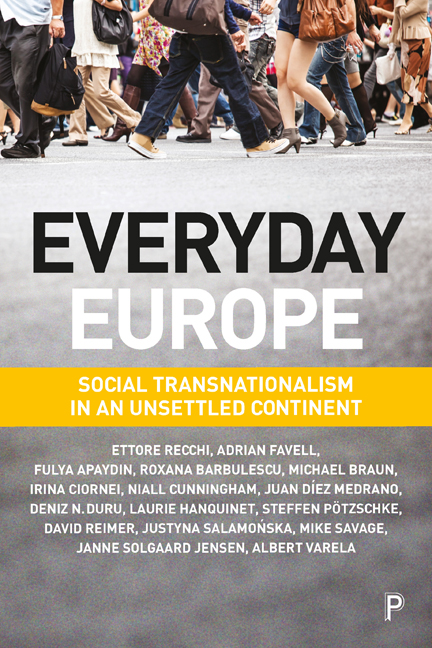93 results
The use of telehealth-supported stewardship activities in acute-care and long-term care settings: An implementation effectiveness trial
-
- Journal:
- Infection Control & Hospital Epidemiology / Volume 44 / Issue 12 / December 2023
- Published online by Cambridge University Press:
- 14 June 2023, pp. 2028-2035
- Print publication:
- December 2023
-
- Article
-
- You have access
- Open access
- HTML
- Export citation
The Rise and Fall of the Age of Psychopharmacology By Edward Shorter Oxford University Press. 2021. US$49.95 (pb). 352 pp. ISBN 9780197574430
-
- Journal:
- The British Journal of Psychiatry / Volume 222 / Issue 5 / May 2023
- Published online by Cambridge University Press:
- 17 April 2023, pp. 221-222
- Print publication:
- May 2023
-
- Article
- Export citation
OP41 Facilitating Dialogue Of Real-World Evidence Use In Health Technology Assessment: Taxonomy Of Question/Data Source Pairings To Support A Registry Of Studies
-
- Journal:
- International Journal of Technology Assessment in Health Care / Volume 38 / Issue S1 / December 2022
- Published online by Cambridge University Press:
- 23 December 2022, pp. S16-S17
-
- Article
-
- You have access
- Export citation
Recommendations for Patients with Complex Nerve Injuries during the COVID-19 Pandemic
-
- Journal:
- Canadian Journal of Neurological Sciences / Volume 48 / Issue 1 / January 2021
- Published online by Cambridge University Press:
- 27 August 2020, pp. 50-55
-
- Article
-
- You have access
- Open access
- HTML
- Export citation
5 - Enforcement Networks and Racial Contention in Civil Rights–Era Mississippi
-
-
- Book:
- Ruling by Other Means
- Published online:
- 29 July 2020
- Print publication:
- 30 July 2020, pp 110-139
-
- Chapter
- Export citation
A flagship for Austral temperate forest conservation: an action plan for Darwin's frogs brings key stakeholders together
-
- Article
-
- You have access
- Open access
- HTML
- Export citation
P0270 - Psychiatrists’ attitudes to antipsychotic depot injections (i): Preferences and choice
-
- Journal:
- European Psychiatry / Volume 23 / Issue S2 / April 2008
- Published online by Cambridge University Press:
- 16 April 2020, pp. S160-S161
-
- Article
-
- You have access
- Export citation
FC01.04 - Psychiatrists’ attitudes to antipsychotic depot injections (II): Changes over 5 years
-
- Journal:
- European Psychiatry / Volume 23 / Issue S2 / April 2008
- Published online by Cambridge University Press:
- 16 April 2020, p. S55
-
- Article
-
- You have access
- Export citation
Sodium valproate in psychiatric practice: time for a change in perception
-
- Journal:
- The British Journal of Psychiatry / Volume 215 / Issue 3 / September 2019
- Published online by Cambridge University Press:
- 13 June 2019, pp. 516-518
- Print publication:
- September 2019
-
- Article
-
- You have access
- HTML
- Export citation
Frontmatter
-
- Book:
- Everyday Europe
- Published by:
- Bristol University Press
- Published online:
- 19 April 2022
- Print publication:
- 13 February 2019, pp i-ii
-
- Chapter
- Export citation
Acknowledgements
-
- Book:
- Everyday Europe
- Published by:
- Bristol University Press
- Published online:
- 19 April 2022
- Print publication:
- 13 February 2019, pp xv-xviii
-
- Chapter
- Export citation
Index
-
- Book:
- Everyday Europe
- Published by:
- Bristol University Press
- Published online:
- 19 April 2022
- Print publication:
- 13 February 2019, pp 301-308
-
- Chapter
- Export citation
one - Cartographies of social transnationalism
-
-
- Book:
- Everyday Europe
- Published by:
- Bristol University Press
- Published online:
- 19 April 2022
- Print publication:
- 13 February 2019, pp 35-60
-
- Chapter
- Export citation
Contents
-
- Book:
- Everyday Europe
- Published by:
- Bristol University Press
- Published online:
- 19 April 2022
- Print publication:
- 13 February 2019, pp iii-vi
-
- Chapter
- Export citation
List of tables and figures
-
- Book:
- Everyday Europe
- Published by:
- Bristol University Press
- Published online:
- 19 April 2022
- Print publication:
- 13 February 2019, pp vii-x
-
- Chapter
- Export citation
Notes on contributors
-
- Book:
- Everyday Europe
- Published by:
- Bristol University Press
- Published online:
- 19 April 2022
- Print publication:
- 13 February 2019, pp xi-xiv
-
- Chapter
- Export citation

Everyday Europe
- Social Transnationalism in an Unsettled Continent
-
- Published by:
- Bristol University Press
- Published online:
- 19 April 2022
- Print publication:
- 13 February 2019
Tardive dyskinesia update: treatment and management
-
- Journal:
- BJPsych Advances / Volume 25 / Issue 2 / March 2019
- Published online by Cambridge University Press:
- 08 October 2018, pp. 78-89
- Print publication:
- March 2019
-
- Article
-
- You have access
- HTML
- Export citation
Tardive dyskinesia update: the syndrome
-
- Journal:
- BJPsych Advances / Volume 25 / Issue 1 / January 2019
- Published online by Cambridge University Press:
- 17 September 2018, pp. 57-69
- Print publication:
- January 2019
-
- Article
-
- You have access
- HTML
- Export citation
DEFINING INNOVATION WITH RESPECT TO NEW MEDICINES: A SYSTEMATIC REVIEW FROM A PAYER PERSPECTIVE
-
- Journal:
- International Journal of Technology Assessment in Health Care / Volume 34 / Issue 3 / 2018
- Published online by Cambridge University Press:
- 10 July 2018, pp. 224-240
-
- Article
- Export citation



